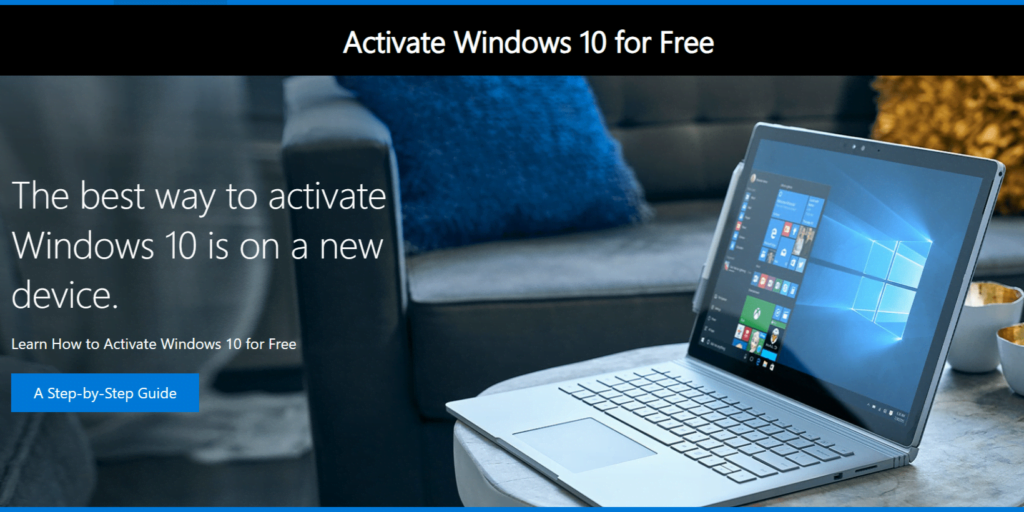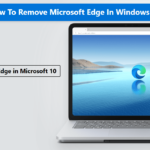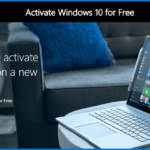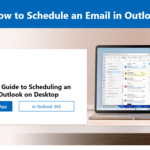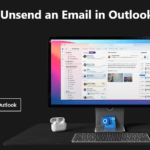Learn various methods to activate Windows 10 for free, including using a digital license, Command Prompt (CMD), and KMS Client Setup Key. Understand the risks and legalities of unauthorized activation, and explore best practices for maintaining a secure and fully functional Windows 10 system.
Introduction to Windows 10 Activation: A Step-by-Step Guide
Activating Windows 10 is a critical step for users to ensure that their operating system is genuine and fully functional. An activated version of Windows 10 not only confirms the authenticity of the software but also unlocks a plethora of features that enhance the user experience. This includes access to essential updates, security patches, and the ability to personalize the OS to a greater extent. Ensuring that your Windows 10 is activated also means receiving timely support from Microsoft, which is vital for maintaining a secure and efficient system.
The cost of purchasing a legitimate Windows 10 license can be a deterrent for many users. A standard Windows 10 Home license typically costs around $139, while the Pro version can be upwards of $199. These prices might be prohibitive, especially for students, small businesses, or individuals on a tight budget. Consequently, many users seek methods on how to activate Windows 10 for free. The allure of free activation methods stems from the desire to avoid these substantial costs while still enjoying the full suite of features that Windows 10 offers.
However, it is crucial to approach free activation methods with caution. While there are legitimate ways to activate Windows 10 for free, such as through digital licenses linked to your Microsoft account or using existing product keys from previous versions, some methods can be risky or illegal. Understanding the proper and safe methods to activate Windows 10 for free, permanently and without any software, can help avoid potential pitfalls and ensure that your system remains secure and compliant with licensing agreements.
Understanding the Risks and Legalities
Attempting to activate Windows 10 for free without a licensed product key can pose significant risks and legal implications. Using unauthorized methods, such as pirated keys or third-party software, not only violates Microsoft’s terms of service but also breaches copyright laws. This can result in severe penalties, including substantial fines and potential legal action.
One of the primary risks of using pirated keys or unauthorized software is the exposure to malware and other security threats. These methods often involve downloading files from unreliable sources, which may contain malicious software designed to compromise your system and personal data. The security of your computer and sensitive information can be greatly compromised, leading to possible identity theft or data breaches.
Furthermore, unauthorized activations frequently result in unstable system performance. Users may experience frequent crashes, system errors, and an inability to access important updates and features. Legitimate methods of activation ensure that you receive all necessary updates that enhance security and functionality, providing a smoother and more reliable user experience.
Using legitimate methods to activate Windows 10 for free, such as through educational or promotional offers, can provide peace of mind and compliance with legal standards. These methods ensure that your system remains secure, stable, and fully functional. Microsoft occasionally offers free upgrades or activation opportunities for certain users, which can be a safe and legal alternative.
In conclusion, while the allure of activating Windows 10 for free without a product key or using unauthorized software may be tempting, the potential risks and legal consequences far outweigh any short-term benefits. It is always advisable to seek legitimate methods to activate Windows 10, ensuring compliance with legal standards and the optimal performance of your system.
Using a Digital License
One of the easiest ways to activate Windows 10 for free is by using a digital license. If you have previously upgraded to Windows 10 from a genuine copy of Windows 7 or 8.1, you can use a digital license to activate your Windows 10.
A digital license, also referred to as a digital entitlement, is a method of activation in Windows 10 that doesn’t require you to enter a product key. Instead, the activation is linked to your hardware and Microsoft account, ensuring a seamless experience when reinstalling or upgrading your operating system.
This method is particularly useful for users who have upgraded from genuine copies of Windows 7 or Windows 8.1, as those systems often come with a digital license for Windows 10.
To check if you have a digital license for Windows 10, follow these steps:
1. Open the Start menu and go to Settings.
2. Click on Update & Security.
3. Navigate to the Activation tab on the left side of the window.
4. Look under the Activation section. If it states “Windows is activated with a digital license,” then your copy of Windows 10 is linked to a digital license.
If your system shows that you have a digital license, you can use it to activate Windows 10 for free without a product key. Here is how to do it:
1. Ensure that your device is connected to the internet.
2. Open Settings from the Start menu.
3. Select Update & Security and then click on Activation.
4. If Windows is not activated, you will see an option to troubleshoot. Click on Troubleshoot to start the activation process.
5. Follow the on-screen instructions. If prompted, sign in with the Microsoft account that is linked to your digital license.
6. After completing the steps, Windows 10 should activate automatically using the digital license.
By using a digital license, you can activate Windows 10 for free permanently, ensuring you do not need to enter a product key or use any external software. This method leverages the benefits of modern technology, offering a reliable and straightforward activation process.
Using the Command Prompt (CMD) Method
Activating Windows 10 for free can be accomplished efficiently using the Command Prompt (CMD) method. This approach involves executing specific commands that can permanently activate your operating system without needing a product key or additional software. Follow these detailed steps to activate your Windows 10 for free using CMD:
Step 1: Open Command Prompt as an Administrator
First, you need to open the Command Prompt with administrative privileges. To do this, type “cmd” in the Windows search bar. Right-click on the Command Prompt application from the search results and select “Run as administrator”. A User Account Control (UAC) prompt will appear; click “Yes” to grant the necessary permissions.
Step 2: Enter the necessary commands
Once the Command Prompt is open with administrative rights, you will need to enter a series of commands. Begin by typing the following command and pressing Enter:
slmgr /ipk yourlicensekey
Replace yourlicensekey with the appropriate generic key for your version of Windows 10. Below are some common generic keys:
- Windows 10 Home:
TX9XD-98N7V-6WMQ6-BX7FG-H8Q99 - Windows 10 Pro:
VK7JG-NPHTM-C97JM-9MPGT-3V66T
After entering the key, execute the following command:
slmgr /skms kms8.msguides.com
This command sets the KMS server, which is necessary for the activation process. Finally, activate Windows 10 by entering:
slmgr /ato
Step 3: Verify Successful Activation
To confirm that Windows 10 has been successfully activated, you can use the following command:
slmgr /xpr
A prompt will appear indicating the activation status of your operating system. If the activation was successful, it will show a message stating, “The machine is permanently activated.”
By following these steps, you can effectively activate Windows 10 for free using the CMD method. This approach is straightforward and does not require a product key or any additional software, making it a convenient solution for users seeking a cost-free activation process.
Activating Windows 10 with a KMS Client Setup Key
Key Management Service (KMS) is a technology used by Microsoft to activate software deployed in bulk across an organization. By using a KMS Client Setup Key, users can activate Windows 10 for free without the need for an individual product key. This method leverages a local server to manage activations, making it a convenient choice for enterprises and individuals alike.
A KMS Client Setup Key is a generic key provided by Microsoft for each edition of Windows 10. These keys do not activate Windows directly but enable the system to connect to a KMS server where the actual activation occurs. Below is a list of KMS Client Setup Keys for various editions of Windows 10:
- Windows 10 Home: TX9XD-98N7V-6WMQ6-BX7FG-H8Q99
- Windows 10 Pro: W269N-WFGWX-YVC9B-4J6C9-T83GX
- Windows 10 Enterprise: NPPR9-FWDCX-D2C8J-H872K-2YT43
- Windows 10 Education: NW6C2-QMPVW-D7KKK-3GKT6-VCFB2
To activate Windows 10 for free using a KMS Client Setup Key, follow these steps:
- Open the Command Prompt as Administrator. You can do this by searching for “cmd” in the Start menu, right-clicking on “Command Prompt”, and selecting “Run as administrator”.
- Enter the following command to install the KMS Client Setup Key for your edition of Windows 10. Replace “XXXXX-XXXXX-XXXXX-XXXXX-XXXXX” with the appropriate key from the list above:
slmgr /ipk XXXXX-XXXXX-XXXXX-XXXXX-XXXXX
- Next, set the KMS server with the following command:
slmgr /skms kms8.msguides.com
- Finally, activate Windows by entering the following command:
slmgr /ato
If the activation is successful, you will receive a confirmation message. This method is straightforward and effective for those looking to activate Windows 10 for free without any software or product key. By utilizing CMD commands and a KMS Client Setup Key, users can achieve permanent activation seamlessly.
Activating Windows 10 with a Product Key
Activating Windows 10 with a product key is one of the most straightforward and legal methods available. A product key is a 25-character code used to activate Windows and ensure its authenticity. These keys can be obtained legally through various channels, including purchasing a new copy of Windows 10, acquiring it from authorized retailers, or receiving it from a previous version of Windows during an upgrade.
To activate Windows 10 using a product key, follow these steps:
1. **Access the Activation Settings**: Begin by clicking on the Start menu and selecting “Settings.” From there, navigate to “Update & Security” and then to the “Activation” tab.
2. **Enter the Product Key**: In the Activation settings, you will see an option to “Change product key” or “Enter a product key.” Click on this option and a dialog box will appear prompting you to enter the 25-character product key. Carefully type in the key and click “Next.”
3. **Complete the Activation**: Once the product key is entered, Windows 10 will attempt to verify and activate the key. If the key is valid and correctly entered, Windows 10 will be activated successfully. You will receive a confirmation message indicating that your copy of Windows 10 is now activated.
While this process is designed to be seamless, users may encounter common issues such as invalid keys, key already in use, or server connectivity problems. Here are some troubleshooting tips:
**Invalid Key**: Double-check the product key for any typos. Ensure that the key matches the version of Windows 10 you are attempting to activate.
**Key Already in Use**: If the product key has been used on another device, it may not work. Contact Microsoft Support to resolve this issue and potentially transfer the key.
**Server Connectivity Issues**: Ensure that your device is connected to the internet. Sometimes, connectivity issues can prevent proper activation. If the problem persists, try again later or contact Microsoft Support.
Activating Windows 10 with a product key provides a legitimate and reliable method to ensure your operating system is fully functional and secure. By following the above steps and using the provided troubleshooting tips, users can successfully activate their copy of Windows 10 without encountering significant obstacles.
Using Third-Party Tools to Activate Windows 10: Pros and Cons
In the quest to find out how to activate Windows 10 for free, many users turn to third-party tools. Among the most popular of these tools are KMSPico and Microsoft Toolkit. These tools operate by emulating the Key Management Service (KMS) that Microsoft uses to activate software in large-scale environments like businesses and educational institutions. By mimicking this service, they can activate Windows 10 without the need for a traditional product key.
The primary advantage of using these third-party tools is their simplicity and effectiveness. Users can activate their Windows 10 operating system quickly, without needing to purchase a legitimate product key. This can be particularly appealing for those who have lost their original activation key or for users who have built their own computers and need to install a new operating system.
However, the use of third-party tools like KMSPico and Microsoft Toolkit is not without its drawbacks. One significant concern is the risk of malware. Since these tools are not endorsed by Microsoft, they are often distributed on less reputable websites, which can expose users to malicious software. Additionally, using these tools can void your warranty and violate Microsoft’s terms of service. This could result in your system being flagged as non-genuine, leading to limited functionality or even potential legal repercussions.
Another disadvantage is the potential for instability. Unauthorized activation methods can sometimes interfere with system updates, leading to compatibility issues or system crashes. Moreover, these activators often require disabling antivirus software during installation, further exposing your system to security threats.
In summary, while third-party tools may offer a quick solution for activating Windows 10 without a product key, they come with significant risks. Users must weigh the convenience against the potential for malware, voided warranties, and violation of Microsoft’s terms of service. It is crucial to consider these factors carefully before deciding on this method.
Troubleshooting Activation Issues
Activating Windows 10 can sometimes be challenging, with various potential issues arising throughout the process. Common problems include error codes, invalid keys, and network issues. This section aims to provide a comprehensive troubleshooting guide to help you resolve these activation challenges effectively.
Firstly, one of the most frequent issues users encounter is error codes. These errors can occur for multiple reasons, such as incorrect key entry, network problems, or even issues with Microsoft’s activation servers. When you receive an error code, it is essential to note it down and search for its specific meaning on the Microsoft support website. This can provide tailored solutions for the exact error you are facing.
Another common issue is the invalid key error. When entering a product key, ensure that you have typed it correctly. It’s easy to mistake characters like ‘O’ for ‘0’ or ‘1’ for ‘I.’ Double-check the key and, if possible, copy and paste it directly from your purchase confirmation email or documentation. If the key is still invalid, verify that it corresponds to the correct Windows 10 edition you are trying to activate.
Network problems can also hinder the activation process. Reliable internet connectivity is crucial for activation. Ensure that your device is connected to a stable network. If you are experiencing connectivity issues, try restarting your router or switching to a different network. Once connectivity is established, attempt the activation process again.
For persistent issues, the Windows Activation Troubleshooter can be a valuable tool. To access it, go to Settings > Update & Security > Activation, and then select Troubleshoot. This tool will automatically detect and attempt to resolve common activation problems. It can fix issues related to incorrect key entry, network problems, and more.
By following these steps, you should be able to overcome the most common challenges related to activating Windows 10 for free. Whether dealing with error codes, invalid keys, or network problems, these troubleshooting techniques can help you successfully activate your Windows 10 system without any additional software or product keys.
Conclusion and Best Practices for Windows 10 Activation
In this guide, we have explored various methods on how to activate Windows 10 for free. From using Command Prompt (CMD) to leveraging KMS servers, these techniques offer temporary solutions for users who need to activate Windows 10 without a product key or additional software. While these methods can be effective, it is crucial to understand the potential risks and legal implications associated with them.
Activating Windows 10 through unofficial means, such as using CMD or third-party tools, may expose your system to security vulnerabilities and legal issues. Therefore, it is highly recommended to purchase a genuine Windows 10 license from an authorized retailer or the official Microsoft website. A legitimate license not only ensures full access to all features and updates but also provides peace of mind regarding the legality and security of your operating system.
To maintain a secure and fully functional Windows 10 system, consider the following best practices:
1. **Regular Updates:** Ensure that your system is always up-to-date by enabling automatic updates. Regular updates help protect your computer from security threats and improve system performance.
2. **Avoid Suspicious Software:** Be cautious when downloading and installing software from unknown sources. Malware and other malicious software can compromise your system’s security and functionality.
3. **Backup Important Data:** Regularly back up your essential files and data to an external drive or cloud storage. This practice helps safeguard your information in case of system failures or other unforeseen issues.
4. **Use Antivirus Software:** Install and maintain reputable antivirus software to protect your system from viruses, malware, and other security threats.
5. **Monitor System Performance:** Keep an eye on your system’s performance and address any issues promptly. Regular maintenance, such as disk cleanup and defragmentation, can help improve your computer’s efficiency.
By following these best practices and considering a genuine Windows 10 license, you can ensure a secure, efficient, and fully functional operating system that meets your needs.

